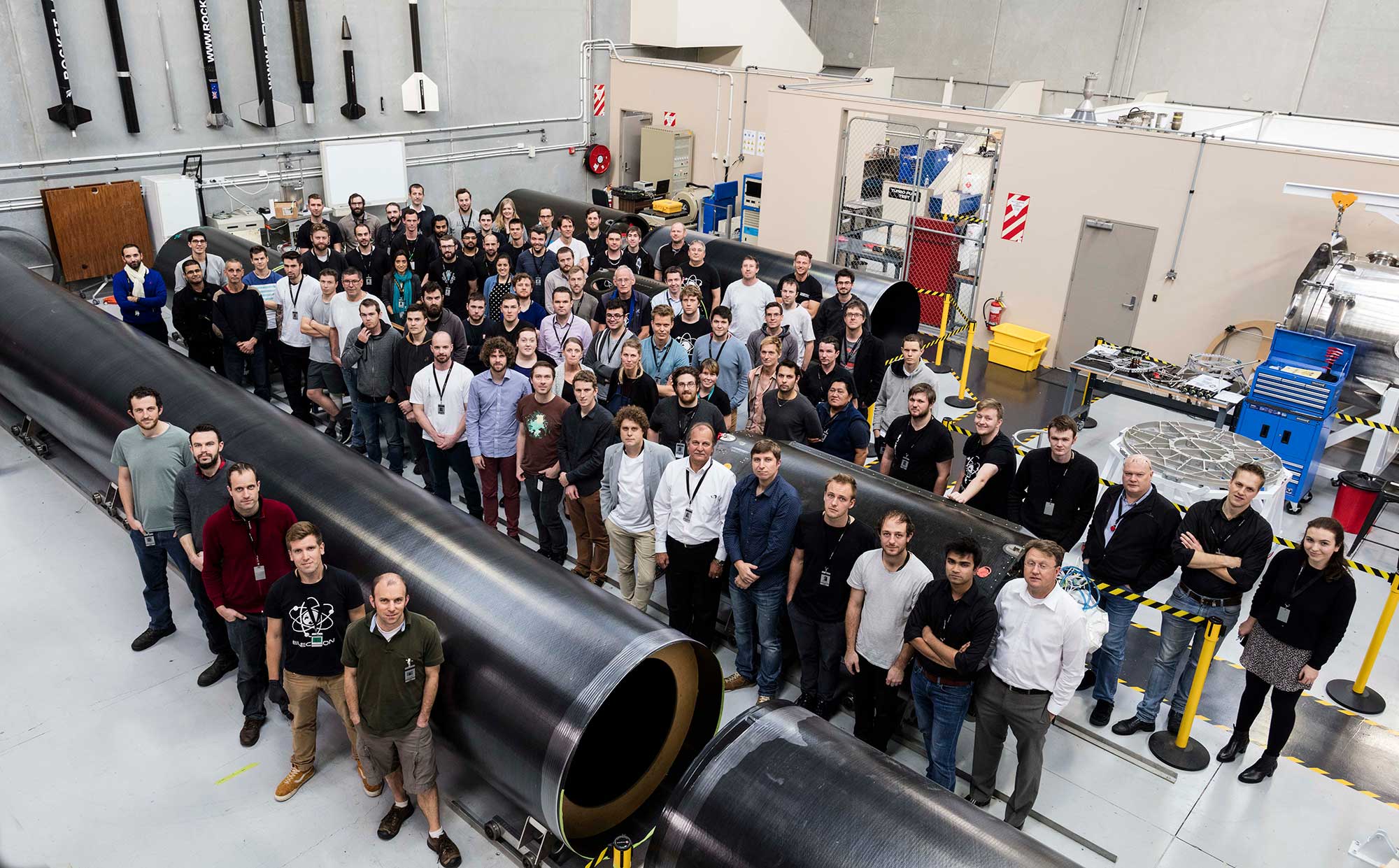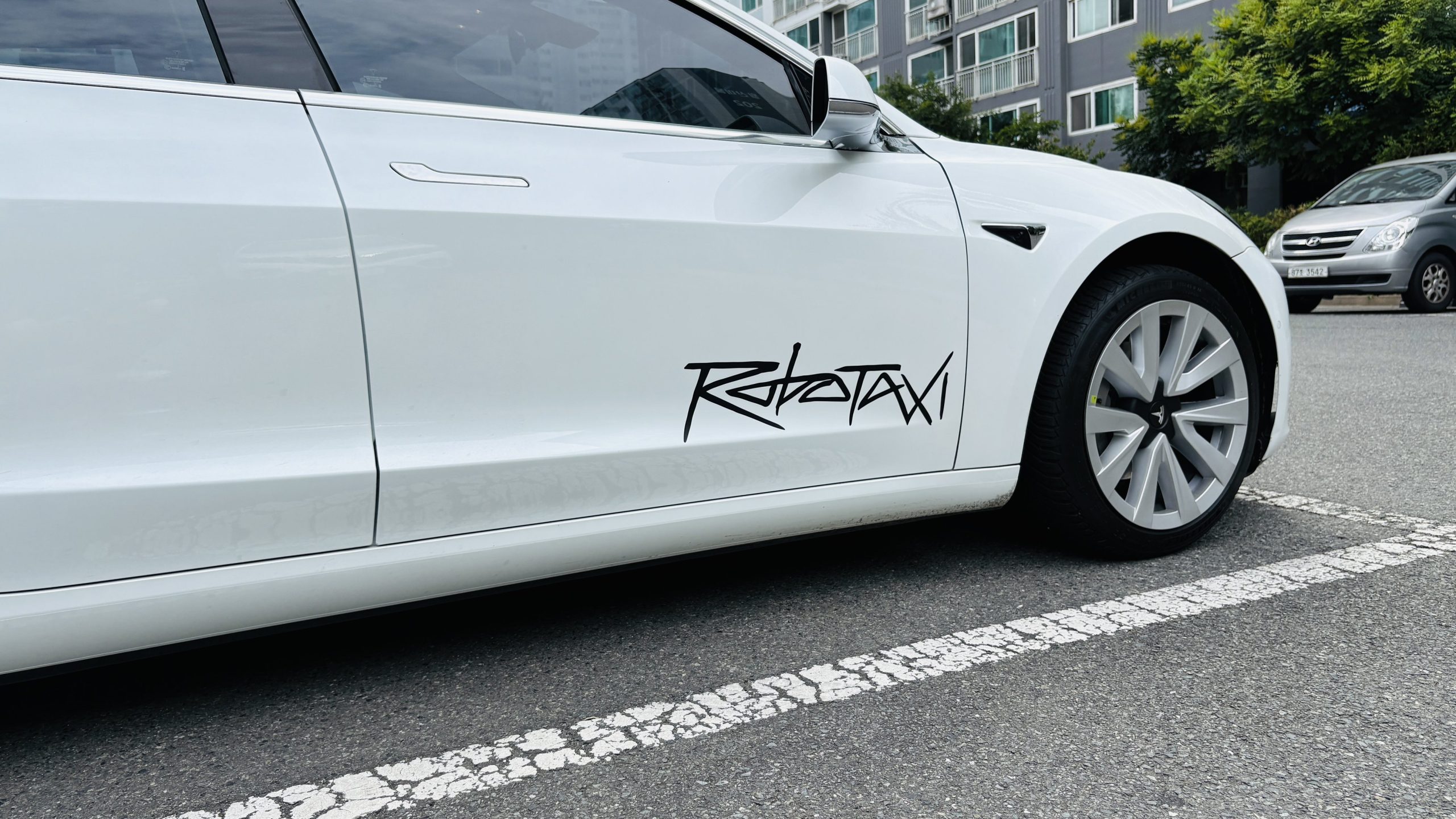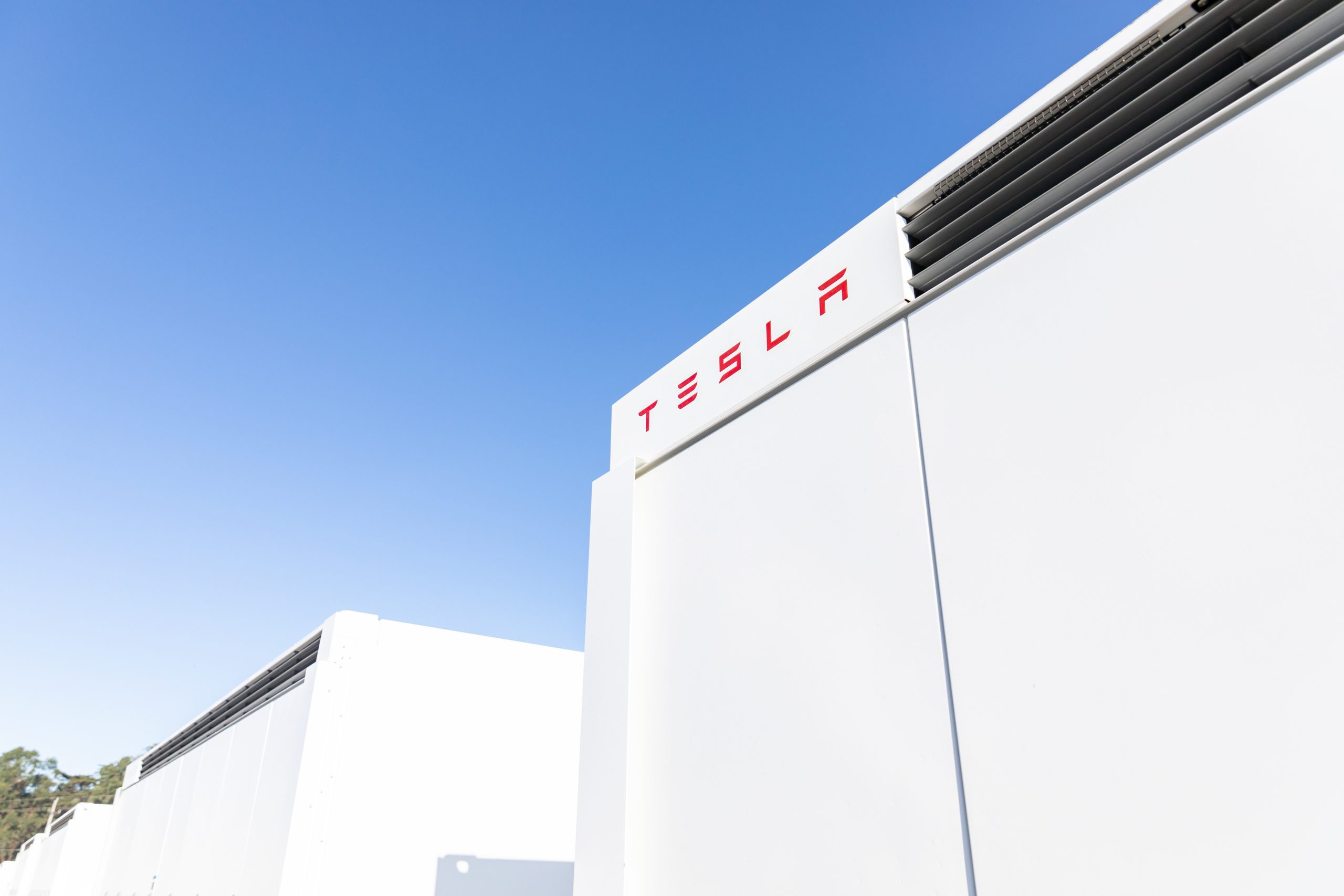News
DeepSpace: Rocket Lab ready for first commercial launch of 2019, an innovative DARPA spacecraft

This is a free preview of DeepSpace, Teslarati’s new member-only weekly newsletter. Each week, I’ll be taking a deep-dive into the most exciting developments in commercial space, from satellites and rockets to everything in between.
If you’d like to receive this DeepSpace newsletter and all of our newsletters and membership benefits, you can become a member for as little as $3/month here.
Now approximately four months distant from the inaugural commercial launch of Rocket Lab’s Electron rocket, the company is ready – following many weeks of customer-side delays – to conduct its first launch of 2019, aiming to place an experimental DARPA-funded satellite into low Earth orbit (LEO).
If all goes as planned with the launch and experimental spacecraft’s orbital operations, Defense Advanced Research Projects Agency (DARPA) hopes to use the mission to qualify a currently-untested technology that could ultimately enable the production of massive communications and sensing antennas that can fit on relatively tiny satellites. Known as R3D2 (ha…ha…), the mission also effectively serves as the latest operational debut of DARPA’s growing interest and involvement in spaceflight-related industries, nominally proving that the agency is capable of leaning on established companies and startups to rapidly design, build, and fly satellites. Barring any additional launch delays from DARPA’s preparations, Rocket Lab hopes to launch Electron around the end of this week – likely March 22-24 – to kick off what will hopefully be a busy and productive year for the newly operational launch provider.
DARPA in Space
- Originally targeted for sometime in the second half of February, the R3D2 mission – Electron’s fifth planned launch in 18 months – has suffered several weeks of delays due to issues faced by DARPA during satellite delivery and pre-launch preparations.
- Aside from a general hint that the satellite arrived a few weeks later than planned and an official statement from Rocket Lab that “DARPA’s payload team is conducting final ground station configuration work over the coming days”, the process appears to be going rather smoothly.
- Weighing in at roughly 150 kg (330 lb), the R3D2 spacecraft – barring the quiet inclusion of co-passengers – will be the first launch of Electron dedicated to a single satellite. In fact, 150 kg is actually the maximum listed payload that Electron is capable of launching to a 500 km (310 mi) sun-synchronous orbit (SSO), providing a functional ‘ceiling’ for the ultimate destination of DARPA’s satellite.
- R3D2’s primary purpose will be to extensively test a brand new antenna technology and thus prove (hopefully) that the in-space deployment mechanism and unique material composition function as designed. Likely no more than 1-2 feet (~50 cm) across, the definitively small satellite will attempt to deploy an antenna many times larger than itself.
- Made out of a material known as Kapton, the deployable antenna will reach a maximum diameter of 2.25 m (7.4 ft), fairly large even when compared with antennas used on satellites many dozens of times more massive.
Rocket Lab’s Biggest year yet
- Although the company is off to a relatively slow start, as many as eleven Electron missions – including R3D2 – are at least tentatively manifested for launches in 2019.
- In November and December of 2018, Rocket Lab further demonstrated that it is more than capable of a respectable monthly launch cadence, particularly impressive for a rocket conducting its third and fourth missions ever. If Rocket Lab can more or less sustain that cadence after DARPA’s R3D2, the company could ultimately complete as many as 8-10 launches this year.
- Ultimately, founder and CEO Peter Beck says that Rocket Lab and Electron will eventually target dozens of annual launches per year and a weekly launch cadence from an array of launch facilities.
- Earlier this year, Rocket Lab officially announced that it had come to an agreement with the state of Virginia to build its second launch complex (LC-2) at Wallops Flight Facility (also known as the Mid-Atlantic Spaceport). If construction proceeds apace, the company’s first US-based Electron launch could occur before the end of 2019.

- DARPA’s goal with R3D2 – and its interest in space and small satellites in general – should ultimately benefit the entire spaceflight industry, potentially paving the way for the design and production of small satellites with technical capabilities that far outstretch their compact nature.
- Reliable and affordable deployable structures are becoming a growing focus of a number of young and old spaceflight companies, ranging from heavyweights like SSL/Maxar to new startups like Oxford Space Systems.
- Unlike most modern defense and aerospace technology procurement, DARPA is also distinctly focused on streamlining the process of designing, building, and launching spacecraft. To do so, the agency plans to rely heavily on established commercial entities to optimize speed and affordability will still ultimately producing innovative space systems and pushing the state of the art forward.
- Aside from closely involved projects like R3D2, DARPA – through a program called Blackjack – is also extremely interested in a number of LEO communications constellations proposed in the last few years by companies like SpaceX, OneWeb, and Telesat, and has already awarded a series of small contracts with several to begin the program’s earliest phases.
Mission Updates
- Completed on March 8th, SpaceX’s near-flawless Crew Dragon launch, space station rendezvous, and recovery is likely the last of the company’s orbital launch activities for the month of March.
- The second launch of Falcon Heavy – the rocket’s commercial debut – is currently expected to occur as early as April 7th
- After Falcon Heavy, SpaceX has at least one other launch – Cargo Dragon’s CRS-17 resupply mission – firmly scheduled for April (April 25th), as well as the more tenuous possibility of the first dedicated Starlink launch occurring as early as late April.
Photos of the Week:
NASA posted a series of official photos documenting SpaceX’s Crew Dragon recovery process following the spacecraft’s first successful orbital reentry and splashdown. The photo below (top) offers one of the best (and most detailed) views ever made public of one of the heat shields of a SpaceX Dragon spacecraft, offering a glimpse of the wear the PICA-X material experiences after several minutes of extreme heating and buffeting. (c. NASA/Cory Huston)

Back on land, SpaceX’s South Texas entourage has continued to build the first full-scale Starship prototype – nicknamed Starhopper – in preparation for the vehicle’s inaugural static-fire and hop tests. According to official SpaceX statements, those tests could occur as early as this week, partially confirmed by the first installation of a Raptor engine (serial number 2) on a flight article of any kind.(c. NASASpaceflight – bocachicagal)

News
Tesla Robotaxi has already surpassed Waymo in this key metric
Tesla Robotaxi has already overtaken Waymo in Austin in one key metric, but there’s still more work to do.

Tesla Robotaxi has already surpassed Waymo in one extremely important key metric: size of service area.
Tesla just expanded its service area in Austin on Monday morning, pushing the boundaries of its Robotaxi fleet in an interesting fashion with new capabilities to the north. Yes, we know what it looks like:
🚨 Tesla’s new Robotaxi geofence is…
Finish the sentence 🥸 pic.twitter.com/3bjhMqsRm5
— TESLARATI (@Teslarati) July 14, 2025
The expansion doubled Tesla Robotaxi’s potential travel locations, which now include the University of Texas at Austin, a school with over 53,000 students.
The doubling of the service area by Tesla has already made its travel area larger than Waymo’s, which launched driverless rides in October 2024. It became available to the public in March 2025.
According to Grok, the AI agent on X, Tesla Robotaxi’s current service area spans 42 square miles, which is five square miles larger than Waymo’s service area of 37 square miles.
Tesla Robotaxi (red) vs. Waymo geofence in Austin.
Much can be said about the shape… but the Robotaxi area is now ~3.9 mi² (10 km²) larger than Waymo’s!! pic.twitter.com/dVfh2ODxJC
— Robin (@xdNiBoR) July 14, 2025
The service area is one of the most important metrics in determining how much progress a self-driving ride-hailing service is making. Safety is the priority of any company operating a ride-hailing network, especially ones that are making it a point to use autonomy to deploy it.
However, these companies are essentially racing for a larger piece of the city or cities they are in. Waymo has expanded to several different regions around the United States, including Arizona and Los Angeles.
Tesla is attempting to do the same in the coming months as it has already filed paperwork in both California and Arizona to deploy its Robotaxi fleet in states across the U.S.
As the platform continues to show more prowess and accuracy in its operation, Tesla will begin to expand to new areas, eventually aiming for a global rollout of its self-driving service.
News
Tesla Megapacks arrive for massive battery replacing coal plant
Tesla Megapacks have started arriving on-site to the Stanwell Battery Project, just as Queensland prepares to wind down the Stanwell coal plant.

The first of over 300 Tesla Megapacks have arrived to the site of a massive battery energy storage system (BESS) being built in Australia, dubbed the Stanwell Battery Project after a coal plant it’s set to replace.
In a press release last week, the Stanwell Battery Project announced that the first Tesla Megapack 2XL units had arrived to the site, which is located outside of Rockhampton in Queensland, Australia. The project will eventually feature 324 Megapack units, set to arrive in the coming months, in order to support the 300MW/1,200MWh battery project.
“The Stanwell Battery is part of the diversification of our portfolio, to include cleaner and more flexible energy solutions,” said Angie Zahra, Stanwell Central Generation General Manager. “It is just one part of the 800 MW of battery energy storage capacity we have in our pipeline.
“Capable of discharging 300 MW of energy for up to four hours (1,200 MWh), our mega battery will be one of the largest in Queensland.”

Credit: Stanwell
Did you know Tesla’s Lathrop facility churns out a Megapack every 68 minutes? That’s enough energy to power 3,600 homes for an hour per unit! ⚡️ pic.twitter.com/bG6fpHkB9O
— TESLARATI (@Teslarati) June 11, 2025
READ MORE ON TESLA MEGAPACKS: Tesla Lathrop Megafactory celebrates massive Megapack battery milestone
The state is working with government-owned company Yurika to facilitate construction, and the process is expected to create roughly 80 jobs. The project is expected to come fully online in May 2027, with initial commissioning of the Megapacks aiming for November 2025.
The Stanwell Battery is set to replace the nearby Stanwell coal generation plant, which the government is planning to wind down starting in 2026 as part of efforts to reach an 80 percent renewable energy generation ratio by 2035. Meanwhile, the government is also set to begin winding down the Tarong and Callide coal plants, while several other Megapack projects are being built or coming online. o ya
Tesla currently has two Megapack production facilities, located in Lathrop, California, in the U.S. and another that came online earlier this year in Shanghai, China. The Shanghai Megafactory shipped its first units to Australia in March, while both factories are expected to be capable of producing 10,000 Megapack units per year upon reaching volume production.
News
The Tesla Diner is basically finished—here’s what it looks like
The company first broke ground on the Diner, Drive-in, and Supercharger location in September 2023. Now, it has served one of its first internal customers.

Tesla has finally completed the construction of its highly anticipated Diner, Drive-in, and Supercharger in Los Angeles, and recent photos of the interior’s “retro-futuristic” style are making their way around the internet.
X user Brad Goldberg shared photos from the Tesla Diner site last Tuesday, depicting some of the Supercharger stalls, indoor and outdoor seating areas, multiple neon lights, and even an Optimus robot. Goldberg also noted that there had been a “flurry of activity on site” while he was snapping the photos last week, suggesting that the restaurant location could be getting close to opening.
The Tesla Diner also served one of its first internal customers in the past few days, as Elon Musk posted on X on early Monday morning that he had just finished up eating a meal at the site:
I just had dinner at the retro-futuristic Tesla diner and Supercharger.
Team did great work making it one of the coolest spots in LA!
The photos also show that the site is pretty much done, with some of them even showing vehicles charging at the charging stalls.
You can see some of the latest photos of the Tesla Diner below.

Credit: BradGoldbergMD | X

Credit: BradGoldbergMD | X

Credit: BradGoldbergMD | X

Credit: BradGoldbergMD | X

Credit: TeslaKing420 | X

Credit: TeslaKing420 | X

Credit: Brad Goldberg (via Sawyer Merritt on X)

Credit: Brad Goldberg (via Sawyer Merritt on X)

Credit: Brad Goldberg (via Sawyer Merritt on X)

Credit: Brad Goldberg (via Sawyer Merritt on X)

Credit: Brad Goldberg (via Sawyer Merritt on X)
READ MORE ON TESLA’S LA DINER: Tesla readies Drive-In Diner Supercharger for launch with app inclusion
When will the Tesla Diner open to external customers?
While it’s still not open to external customers yet, the news again suggests that the company could be close to an official opening date. Tesla first broke ground on the Diner in September 2023, after receiving a wave of building permit approvals throughout that year. Teslarati also covered much of the construction progress throughout last year, including when crews installed the first and second drive-in screens.
Located at 7001 West Santa Monica Boulevard, the idea was first discussed in 2018 by Musk and a few others on Twitter, featuring 1950s rock and roll, waiters on roller skates, and drive-in movie theater screens playing clips from some of history’s best movies. Notably, the photos of the front doors also show that the site will be open 24 hours a day, 7 days a week, whenever it does end up opening.
Tesla’s progress on Supercharger with diner, drive-in seen in aerial footage
-

 Elon Musk2 weeks ago
Elon Musk2 weeks agoTesla investors will be shocked by Jim Cramer’s latest assessment
-

 News2 days ago
News2 days agoTesla debuts hands-free Grok AI with update 2025.26: What you need to know
-

 Elon Musk4 days ago
Elon Musk4 days agoxAI launches Grok 4 with new $300/month SuperGrok Heavy subscription
-

 Elon Musk6 days ago
Elon Musk6 days agoElon Musk confirms Grok 4 launch on July 9 with livestream event
-

 News1 week ago
News1 week agoTesla Model 3 ranks as the safest new car in Europe for 2025, per Euro NCAP tests
-

 Elon Musk2 weeks ago
Elon Musk2 weeks agoxAI’s Memphis data center receives air permit despite community criticism
-

 News4 days ago
News4 days agoTesla begins Robotaxi certification push in Arizona: report
-

 News2 weeks ago
News2 weeks agoTesla sees explosive sales growth in UK, Spain, and Netherlands in June
























